Writer: Kay Ledbetter, 806-677-5608, skledbetter@ag.tamu.edu
Contacts: Dr. Paul DeLaune, 940-552-9941, pbdelaune@ag.tamu.edu
VERNON – Double cropping may be another consideration for producers who have used cover crops in wheat systems within the Rolling Plains, according to an ongoing Texas A&M AgriLife Research study.
Dr. Paul DeLaune, Texas A&M AgriLife Research in Vernon, talks about cover crops and double cropping in the Rolling Plains. The two crops pictured are sesbania in the foreground and Ace cowpea. (Texas A&M AgriLife photo by Kay Ledbetter)
Dr. Paul DeLaune, AgriLife Research environmental soil scientist in Vernon, recently hosted a field day in Archer, Wichita and Wilbarger counties, allowing producers to look at cover crops and double-cropping systems under different circumstances.
DeLaune’s three on-farm sites are funded by Southern Sustainable Agriculture Research and Education. He began experimenting with cover crops in wheat systems after a soil health initiative was released by the U.S. Department of Agriculture’s Natural Resources and Conservation Service in 2012.
Initial research began by evaluating only mixed species cover crops that included cowpeas, mung beans, guar, forage sorghum, pearl millet, foxtail millet, buckwheat and sunflower.
“Then the question was raised: Instead of planting a cover crop, could you double crop by planting a 60-day crop and harvest it to make a profit?” he said. “And in doing so, are the same soil health benefits achieved as with a cover crop program?”
Cover crops are planted to hold soil in place and provide residue and nutrients for winter wheat planted in the fall. DeLaune studied varieties as well as termination timing of cover crops, including terminating after 55-70 days of growth or leaving it for the 75-90-day range to determine how that affected the following wheat crop.
“I think we’ve found that with normal rainfall, going longer with the cover crops isn’t hurting our wheat yields and it adds more residue to the cropping system, as well as increased active carbon pools and microbial activity,” he said.
The next step was to look at leaving the summer crop and taking it to harvest rather than terminating it as a cover crop, DeLaune said.
“In the past three years where we’ve been able to double crop or terminate cover crops near maturity, our wheat yields have not consistently suffered,” he said. “Where it did hurt was where we had well-below rainfall or precipitation available. In those years, though, the whole crop was a disaster due to lack of moisture, so we can’t blame it on the cover crops or double cropping.”
DeLaune said in that instance, the double crop was a benefit.
“In 2017, guar and mung bean produced just under 1,000 pounds per acre; however, the following wheat crop was a failure, with or without a double or cover crop,” he said. “In this instance, the income came from the summer crop.”
Drought conditions hampered wheat, cover crop and double crop performance in 2018.
However, DeLaune demonstrated the potential rooting depth and below-ground biomass developed in 60 days of growth of both pearl millet and forage cowpea. Even though above-ground biomass did not look impressive, there was still a substantial amount of root biomass developed, which contributes to several soil health benefits, he said.
Nathan Haile with the USDA Natural Resources Conservation Service demonstrates rooting systems of grass and legume species. (Texas A&M AgriLife photo by Kay Ledbetter)
In a dryland situation, it is hard to recover the cost of the cover crops, DeLaune said, especially when yields of the wheat crop are maintained or only slightly increased. But there are conservation benefits from the residue left in the winter crop such as reduced runoff, erosion and soil compaction along with improved water infiltration.
DeLaune said the idea behind the double-cropping system is the summer crop would generate income that would offset any potential wheat yield loss, and the benefits of the enhanced residue would still be realized. Trends indicate that a longer growing crop, either double crop or cover crop, leads to increased active carbon pools and microbial activity.
Soil moisture use by cover crops and double crops is a concern expressed by producers.
A mixed species cover crop grows among the residue from the prior year. (Texas A&M AgriLife photo by Kay Ledbetter)
“We’ve found that soil moisture is recharged between termination of summer crops and wheat planting, with little difference in late fall soil moisture between early terminated cover crops and double-cropped or later-terminated cover crops,” he said.
DeLaune demonstrated at one of the stops during the tour that terminating cover crops at stages closer to maturity leads to more lasting residue. Mixed grass/legume and mixed broadleaf cover crops terminated after about 60 days of growth left little residue a year later compared to obvious residue from plots where similar cover crops were terminated at 75-90 days.
Over the past three years, he has included in the cover crop and double-crop options either a mix or monocultures of guar, pigeon pea, mung bean, forage cowpea, black-eyed cowpea, sunn hemp and sesbania. Mixes have included variations of guar, forage cowpea, mung bean, pearl millet, German foxtail millet, proso millet, forage sorghum, sunflower and buckwheat.
During that period, DeLaune said while some have had success with sunn hemp as a cover crop, it hasn’t performed well as a monoculture in the Rolling Plains. As for the mixes, he said cowpeas and pearl millet comprise the majority of produced biomasses, and mung bean to some extent.
Dr. Paul DeLaune looks at Texas A&M’s newly released Ace cowpea being grown in a cover crop scenario. (Texas A&M AgriLife photo by Kay Ledbetter)
Mung bean is a 60-day crop he has harvested for the beans with limited success, while cowpeas can be harvested for grain, but will probably be better as a forage or a hay rather than taking it to a grain crop, he said.
The new forage Ace cowpea recently released by Texas A&M has performed well in the Rolling Plains, DeLaune said, averaging over 4,900 pounds per acre biomass over a three-year period with an average of 127 pounds of accumulated nitrogen per acre in 60 days of growth.
“It comes down to this: Every year will be different, and you have to make management decisions based on the forecasted conditions and choose species you know will perform well in your area,” DeLaune said. “Initial intentions may be a double crop, but it may become a cover crop depending on conditions, such as we observed in 2018 when summer crops didn’t emerge until late simmer due to drought.
“Some of the best double-cropping or cover crop performers in our region are cowpeas, pearl millet, mung beans and sesbania,” he said.

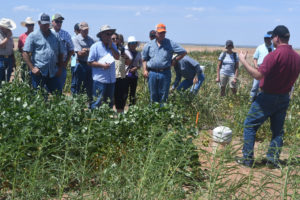
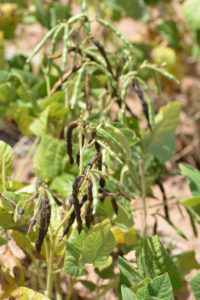
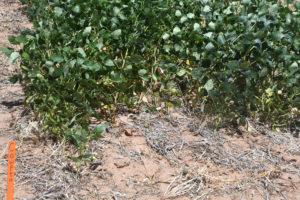
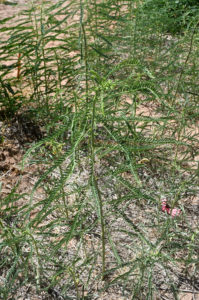
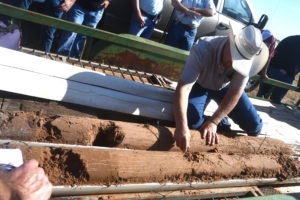
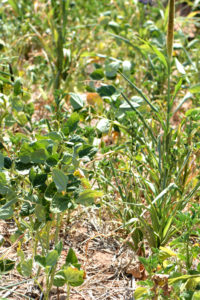
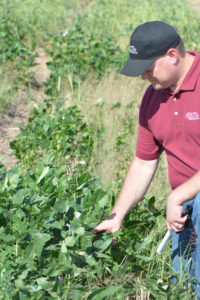
Leave a Reply